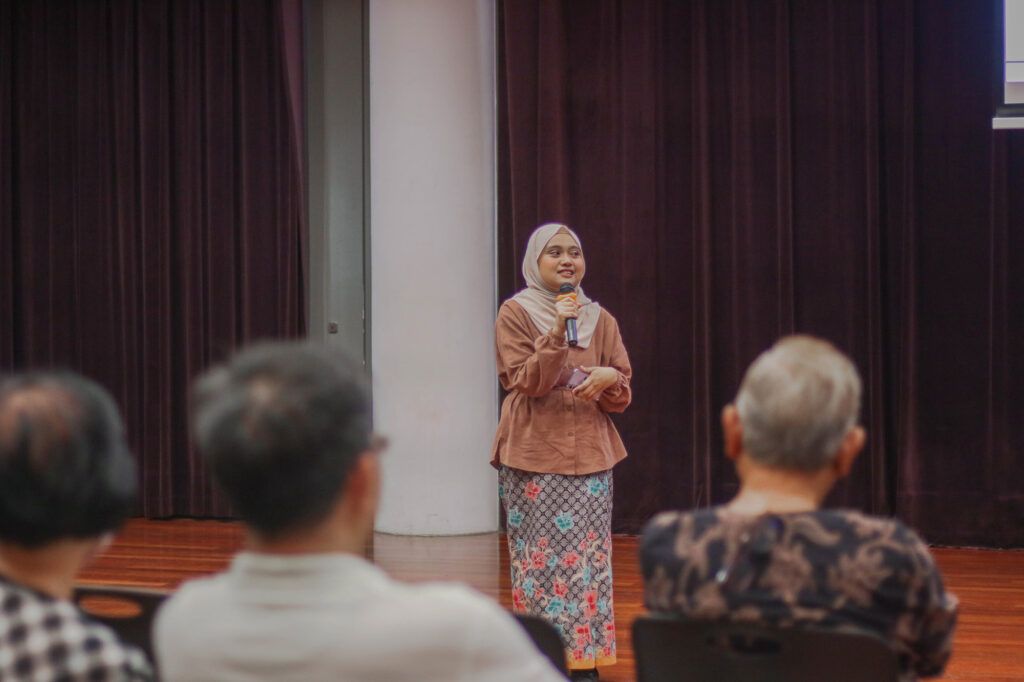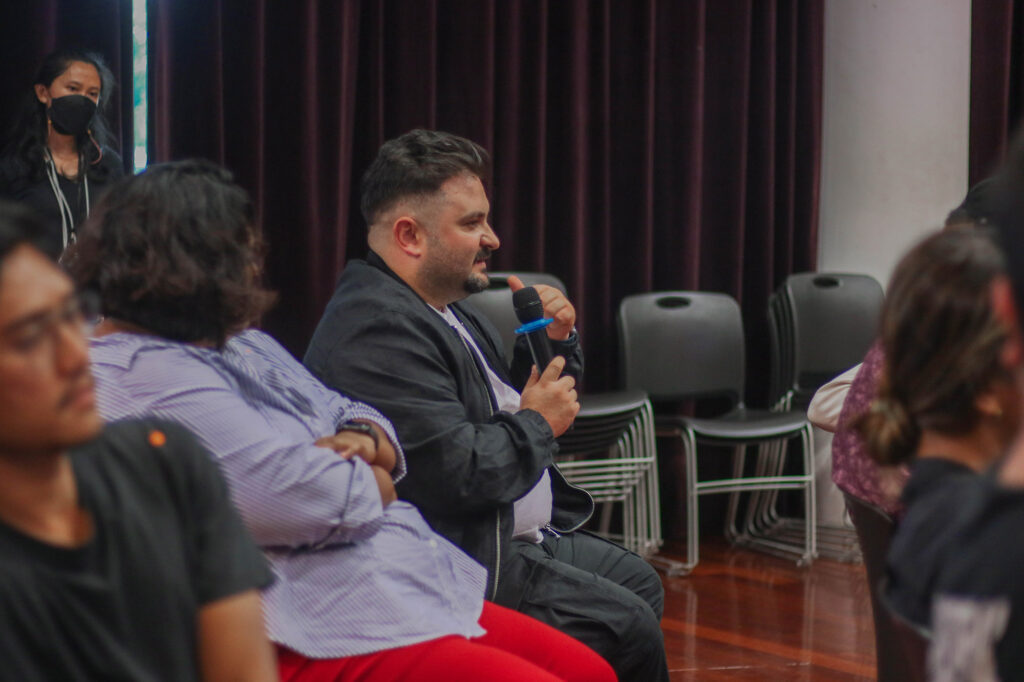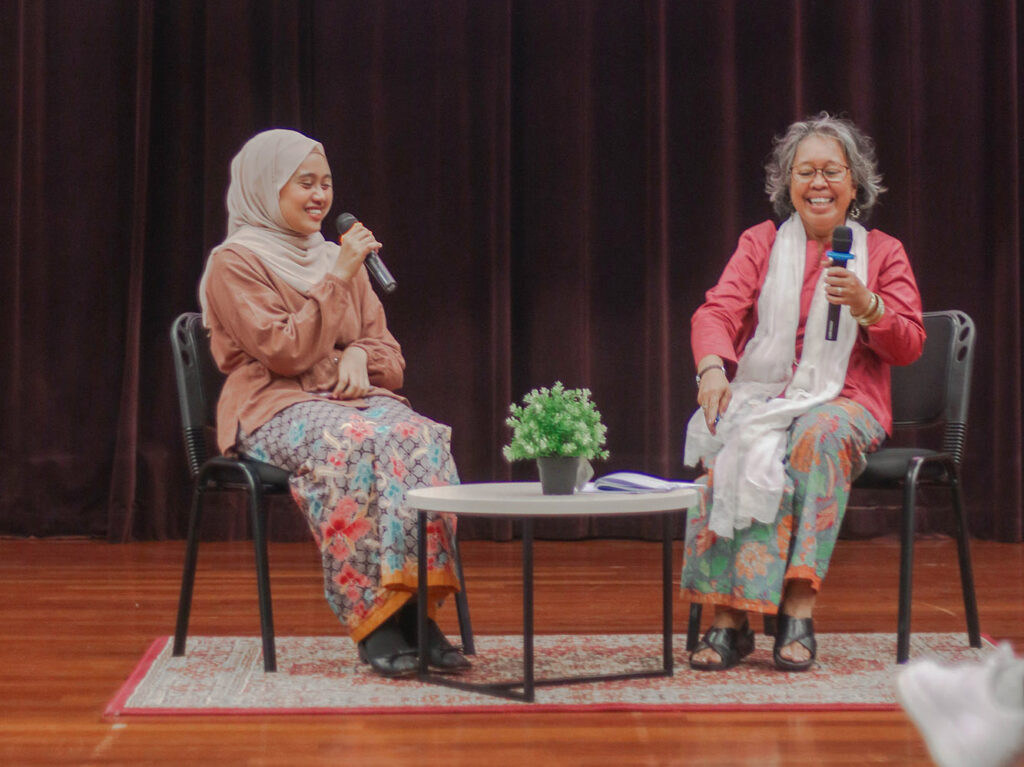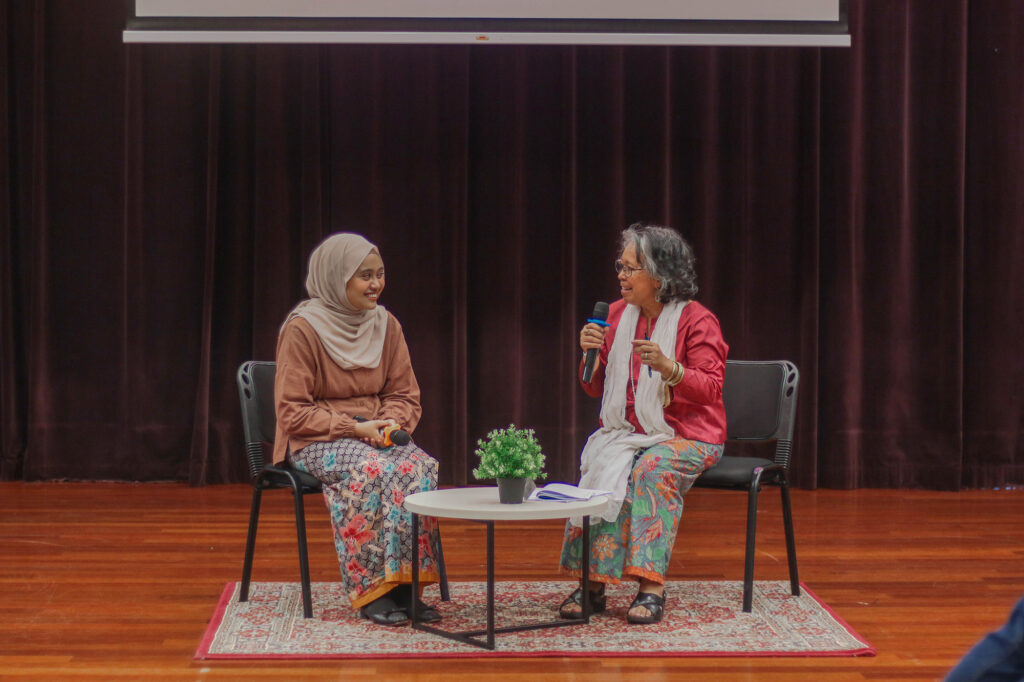The Importance of Research In and On Malay Dance
By Nur Zakirah Binte Rosman (2023)
How can dance research complement the development of Malay dance, and widen perspectives on the issues within the society – for both practitioners and audiences.

Suraya Suhairi is a recent graduate of NUS Malay Studies and the University Scholars Programme (USP). We were given the opportunity to listen to Suraya’s presentation on her honours thesis titled “Malay Dance As a Platform for Social Discourse on Women”. Suraya is also an NUS Ilsa Tari’s alumna, and we were happy to have her back for the GERAK Symposium!
Motives of Research
Her research on the exploration of practitioner’s accounts of their ideation process on the theme of women was done to examine how they navigate the structures, expectations and norms in the society. To do so, Suraya adopted a multidisciplinary approach to dance. She employed a sociological perspective alongside references to critical dance studies to inspect a total of 7 different Malay dance productions on the theme of women, created by 4 different practitioners. By presenting a range of Malay dance practitioners partaking in the discourse on women through their dance productions, her thesis aims to showcase the scope of responses on the Singapore Malay Muslim women issues.

Inspiration
She claimed that her involvement with Ilsa Tari’s 2021 production titled ‘Rantau: Layaran Sukma’ had provided her with the experiences and insights on the issue of Malay dance and women.
In demonstrating women’s capacity in making their own decisions, Rantau: Layaran Sukma confronts the concepts of the “ideal woman” that are built on society values and standards. As the president of Ilsa Tari (2019-2020), she was actively involved in the ideation processes behind the production. For that year, Ilsa Tari consulted with Dr Suriani Suratman from the NUS Department of Malay Studies, as the academic advisor for the production. As such, she was able to broaden her perspectives towards the varied experiences and the issues Malay women face pertaining to their identity, expectations and gendered roles in our society. As part of the Rantau series, Suraya was also a panellist for the symposium prior to the production, titled ‘Rantau: Alunan Samudera’. Issues relating to societal standards and expectations of women in society in dance, as well as the experiences of female dance practitioners, were discussed throughout the symposium.

All of the experiences heard and felt by Suraya has therefore left her pondering more about Malay dance and the theme of Malay women, thereby providing her with an inspiration to continue the discourse through her thesis.
Shifts In The Malay Dance Practice
Suraya has showcased the positive shift in the Malay dance practice towards the utilisation of social media platforms to document practitioner’s thoughts and their ideation process. She highlighted several types of documentations using various mediums, such as video interviews and production brochures. An example of a production brochure is one by Nur Fadiah Johari for P7:1SMA Ltd’s ‘Nak Dara’. Nak Dara (2020) is also a production on the theme of women, that highlighted female allyship and questions women’s agency towards their sexuality, pleasure and sex.
Another type of medium used for documentation is curated websites. This article – and by extension, the GERAK website – is also an example of NUS Ilsa Tari’s efforts in documenting what went on during the symposium. I believe that the process of documenting one’s works is important to ensure that others in the future can refer to it as a guide or as a way to know more about what has been done. It also ensures that the discussion does not simply end at the event or after a production. Instead, it probes the audience to be critical when viewing certain themes and questions these themes in their everyday encounters. That being said, it can also provide other dance practitioners with the inspiration to make a difference through surfacing other societal issues as well!
Apart from that, Suraya also showcased how there is a shift towards thematic productions in the 1980s, moreso on the theme of women. For example, ‘Onak Samudera’ (2014) by Mdm Som Said reveals women dancers’ personal stories as it showcases how women dancers juggle between their career and motherhood. Onak Samudera raises the awareness of the lived experiences of women dancers, and recognises the struggles and responsibilities that Malay women bear as a wife, daughter, mother, dancer or employee.
Role of dance in discourse
Additionally, Suraya surfaced how dance is a useful tool in impacting discourse due to its ability to evoke various kinds of emotions among the audience. For instance, Dr Noramin Farid’s work as part of Bhumi Collective titled ‘Sau(dara)’ in 2018, had the capacity to evoke dissonance and empathy among the audience. This work addressed the expectations of women, imposed by their mothers. In Sau(dara), there was a scene where the daughter pointed her feet in her mother’s face. This evoked dissonance and contradiction with Malay values, as one has to be respectful towards your mother. As the saying goes: “syurga terletak di bawah kaki ibu” (the heaven lies under the mother’s feet). In displaying such a scene, Sau(dara) provided a nuanced perspective on how daughters may be confined to having to fulfil their mother’s wishes, expectations or needs.

Adding on, women dancers can also utilise their personal experiences and express themselves through dance. By doing so, they provide an effective display of emotions which may instil a better understanding among the audience. It also provides the audience with a broadened perspective towards the identities of women wherein there is much more to a woman’s persona as a dancer. Apart from being a female dancer, she may also be a daughter, wife, employee or mother. In understanding that, individuals can acknowledge that women may face challenges in trying to maintain such identities or responsibilities. The emotions and body movements expressed by the female dancers through dance can also provide audiences with visual descriptions on a certain theme and thereby, carrying a high likelihood of success in conveying the message desired to the audience.
In my previous article on the GERAK Pre-Symposium, I shared that I strongly believe in the importance of Malay dance as a medium to raise social awareness on issues within the community. Suraya’s presentation has reaffirmed my beliefs, and emphasised the importance of research to complement such potential in dance. I realised that research should happen both ways. Firstly, it is to research while doing dance and document such processes as it will serve as a guide and resource for others. Secondly, following Suraya’s thesis on dance-making, more research has to be done on Malay dance beyond its aesthetic forms, but to highlight discourse and challenges in Malay dance. Quoting from Mdm Som Said in her segment with the Malay dance veterans, “(we) are intellectual dancers, thinking dancers”. Therefore, it is important for documentation and research to move simultaneously with the growth of Malay dance productions, and to highlight the contributions of Malay dance practitioners within the intellectual industry.

More information on her thesis can be found here:
Suraya Binte Suhairi (2022-04-22). Malay Dance As A Platform For Social Discourse On Women: A Study On Malay Dance Practitioners And Dance-Making In Singapore. ScholarBank@NUS Repository.